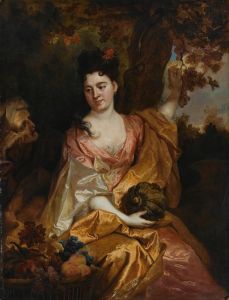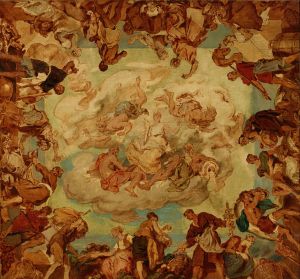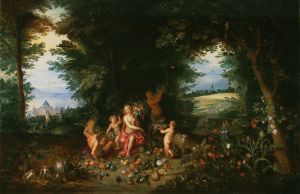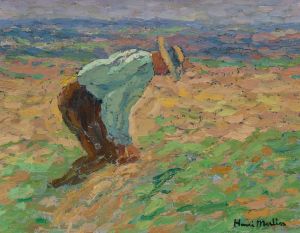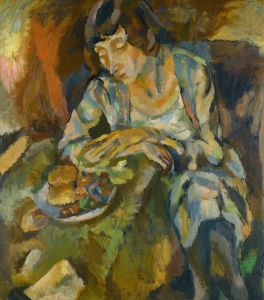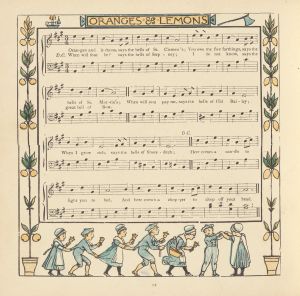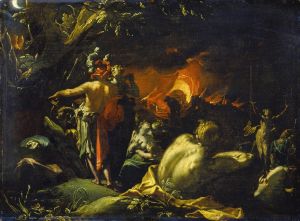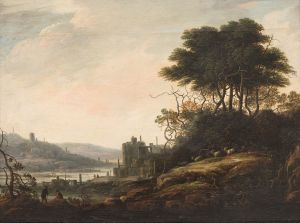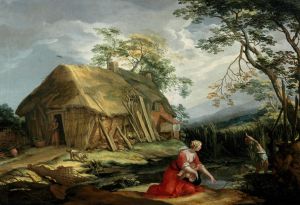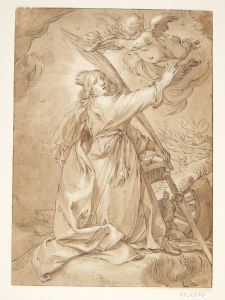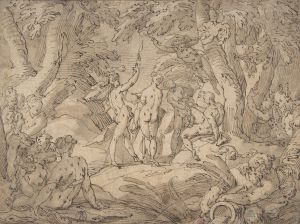
Landscape With Vertumnus And pomona
A hand-painted replica of Abraham Bloemaert’s masterpiece Landscape With Vertumnus And pomona, meticulously crafted by professional artists to capture the true essence of the original. Each piece is created with museum-quality canvas and rare mineral pigments, carefully painted by experienced artists with delicate brushstrokes and rich, layered colors to perfectly recreate the texture of the original artwork. Unlike machine-printed reproductions, this hand-painted version brings the painting to life, infused with the artist’s emotions and skill in every stroke. Whether for personal collection or home decoration, it instantly elevates the artistic atmosphere of any space.
"Landscape with Vertumnus and Pomona" is a painting by the Dutch artist Abraham Bloemaert, a prominent figure of the Dutch Golden Age. Bloemaert, known for his versatility and mastery of various styles, created this work as part of his exploration of mythological and pastoral themes, which were popular during the late 16th and early 17th centuries.
The painting depicts the mythological story of Vertumnus and Pomona, derived from Ovid's "Metamorphoses." In the tale, Vertumnus, the Roman god of seasons, change, and plant growth, falls in love with Pomona, a nymph devoted to the care of fruit trees and gardens. Pomona initially rejects all suitors, preferring to focus on her horticultural pursuits. However, Vertumnus disguises himself as an old woman to gain access to her orchard and eventually reveals his true form, winning her affection. This narrative celebrates themes of transformation, love, and the harmony between nature and human emotions.
Bloemaert's interpretation of the story is set within a lush, idealized landscape, characteristic of his style. The composition integrates classical mythology with the naturalistic detail and atmospheric perspective that were hallmarks of Dutch landscape painting. The figures of Vertumnus and Pomona are central to the scene, surrounded by abundant vegetation, symbolizing fertility and growth. Bloemaert's use of light and color enhances the idyllic and romantic quality of the work.
As a leading artist of the Utrecht School, Bloemaert was instrumental in bridging the Mannerist and Baroque styles. His works often combined the elongated forms and dynamic compositions of Mannerism with the emerging naturalism and emotional depth of the Baroque. "Landscape with Vertumnus and Pomona" exemplifies this synthesis, showcasing his skill in both figure painting and landscape art.
The exact date of the painting's creation is not definitively documented, but it is believed to have been produced during the early 17th century, a period when Bloemaert was at the height of his career. The work reflects the cultural and artistic interests of the time, particularly the fascination with classical mythology and the natural world.
Today, "Landscape with Vertumnus and Pomona" is recognized as an important example of Bloemaert's oeuvre and a testament to the enduring appeal of mythological themes in art. The painting is housed in a museum collection, where it continues to be appreciated for its artistic and historical significance.






